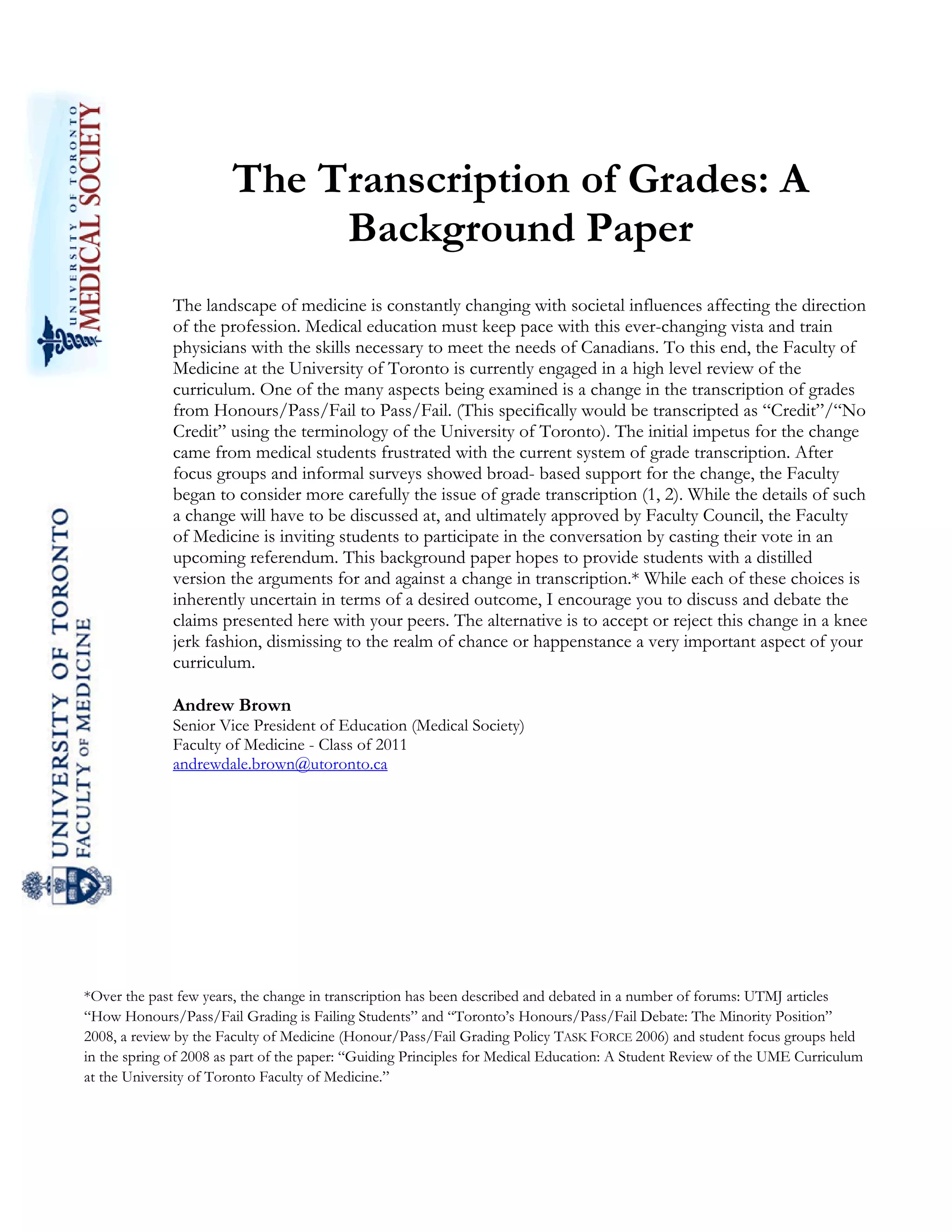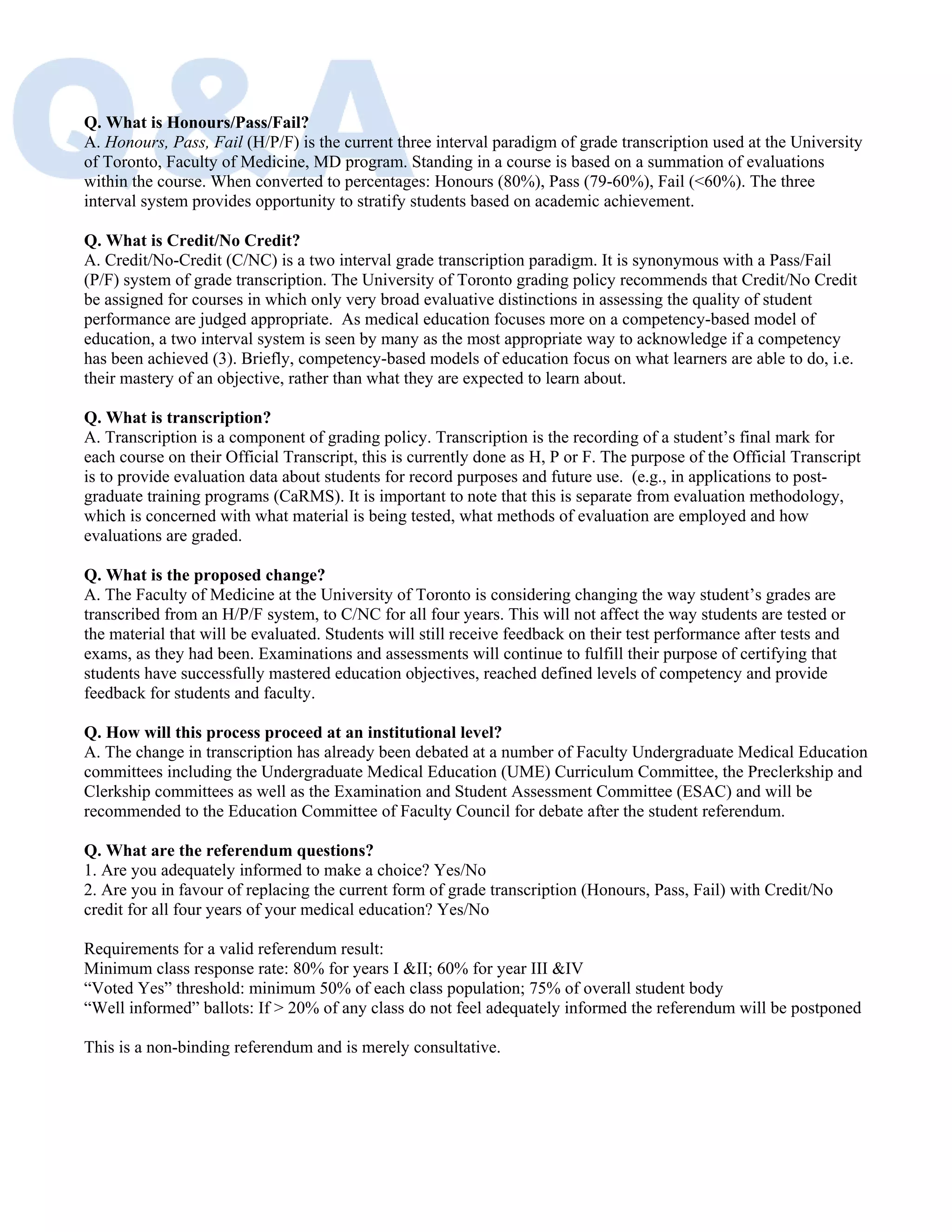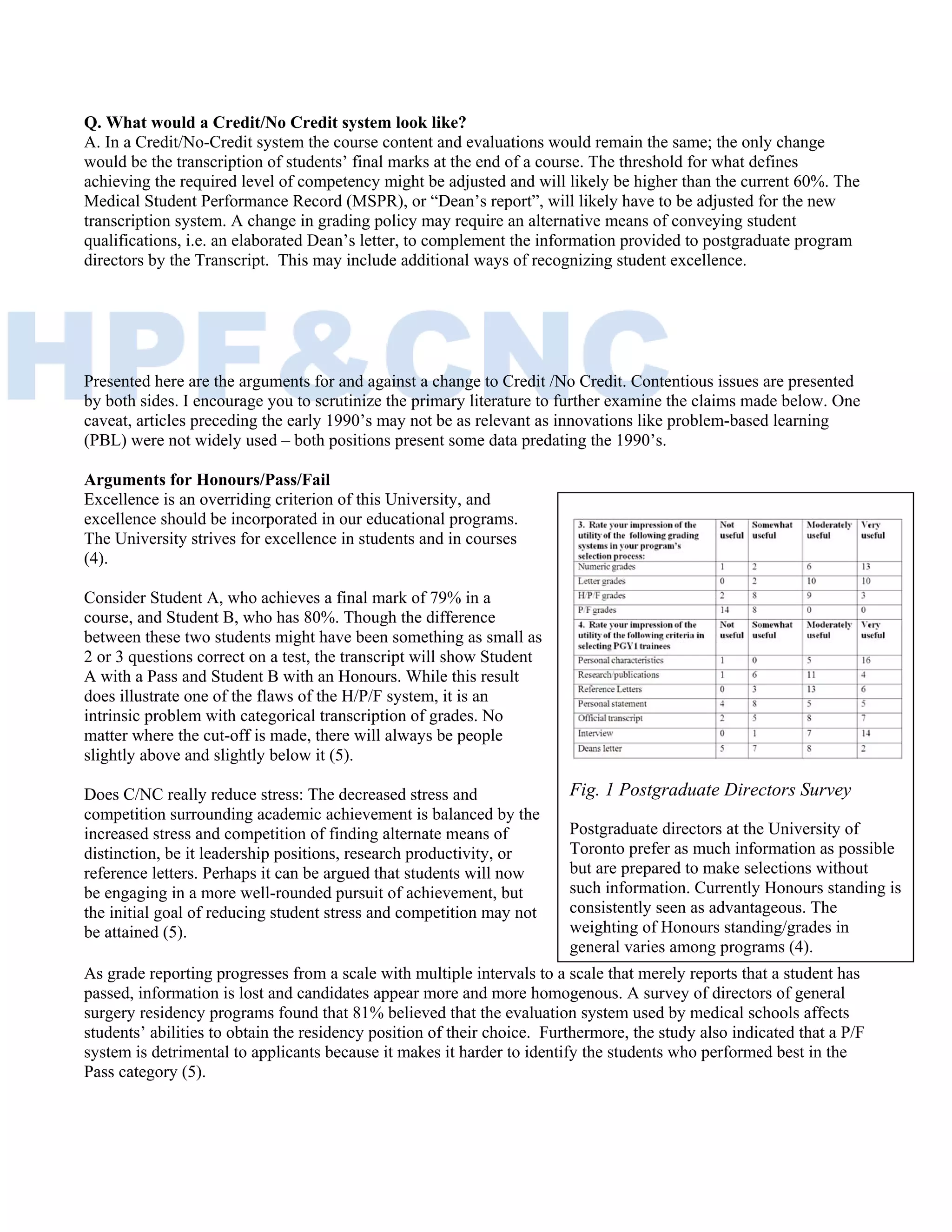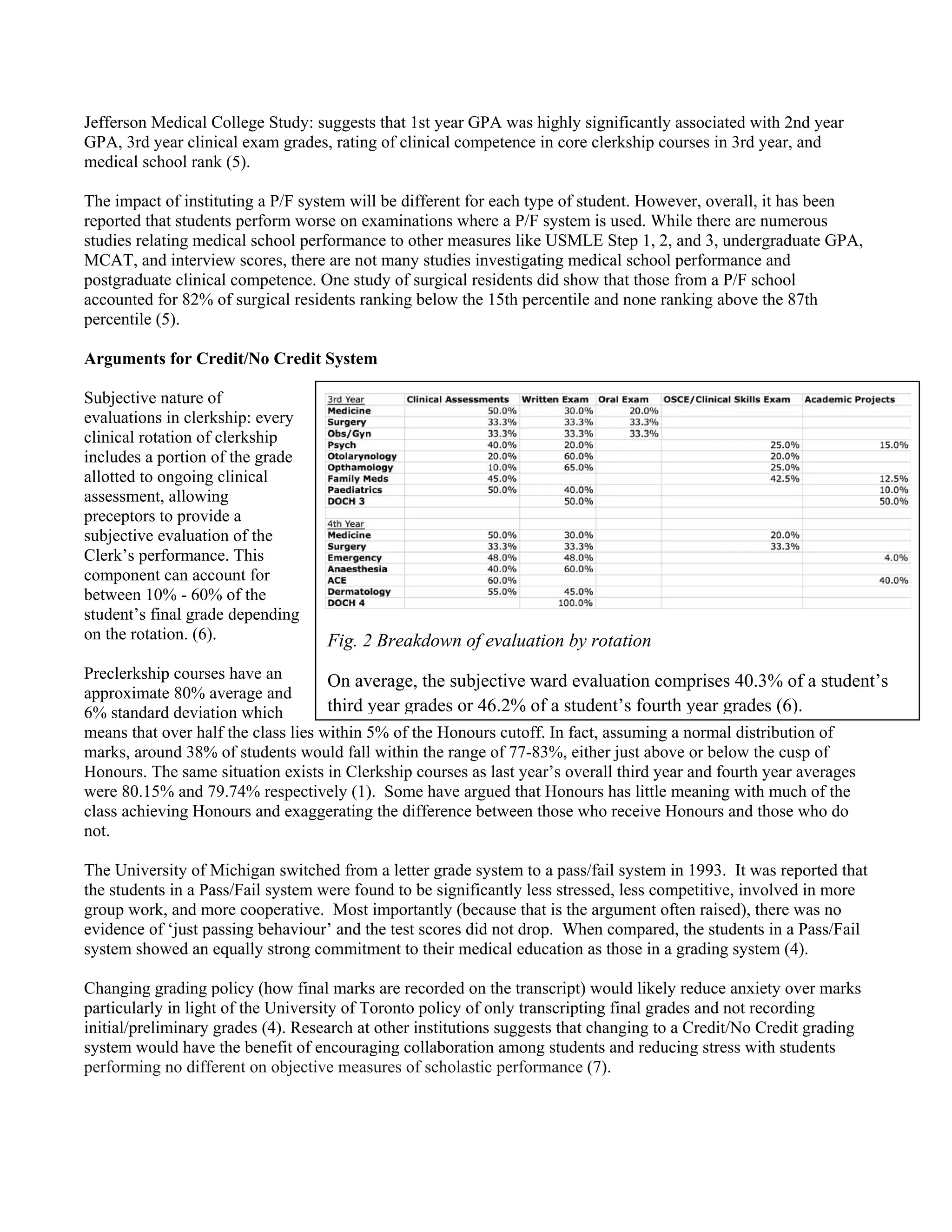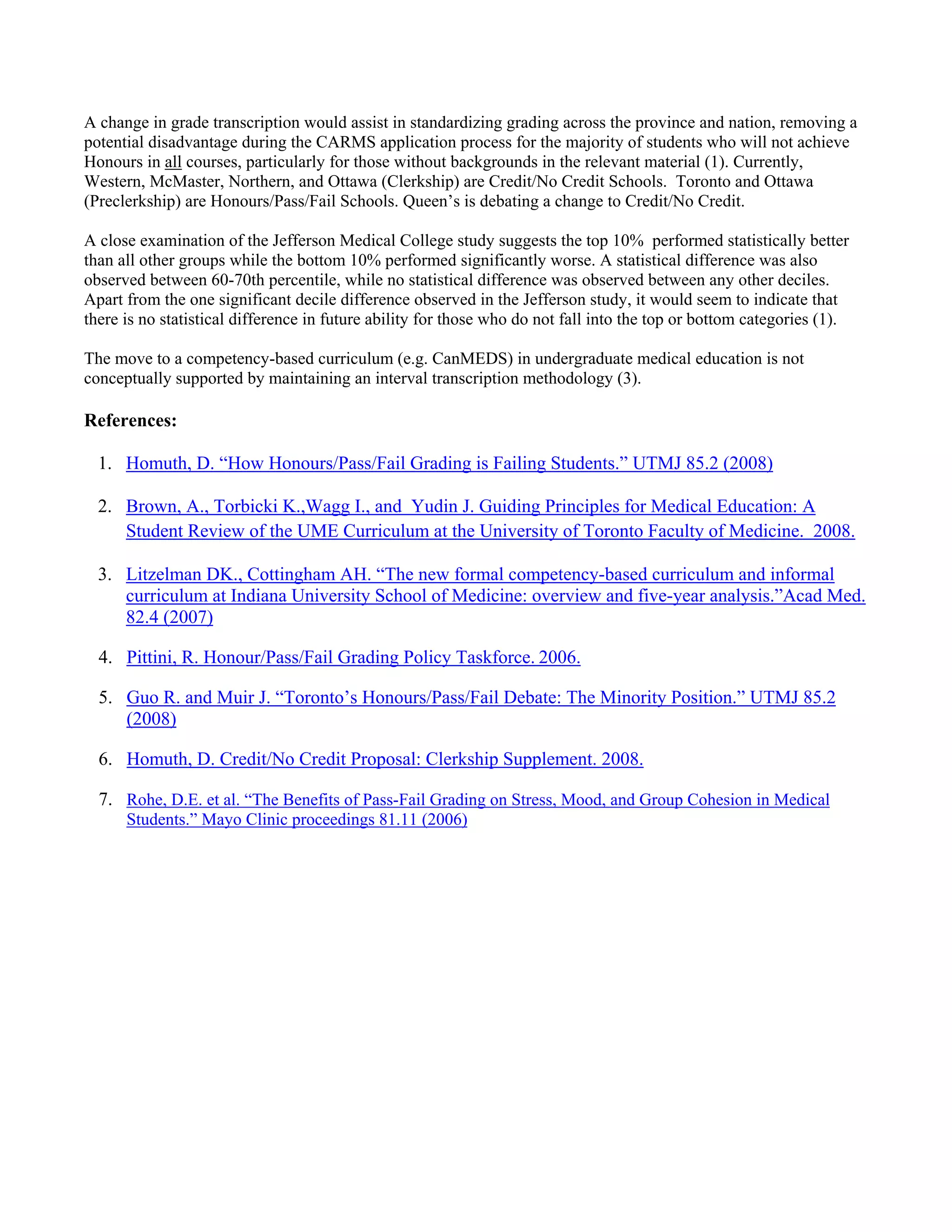The document summarizes the debate around changing the grading system at the University of Toronto Faculty of Medicine from Honours/Pass/Fail to Credit/No Credit. It provides background on the systems and outlines arguments presented by students and faculty on both sides of the issue. A referendum will be held for current students to provide input on the proposed change before it is considered by the Education Committee and Faculty Council. The summary aims to concisely inform students of the key issues to facilitate an informed discussion and vote.
